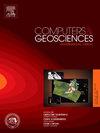基于提示工程误差反馈机制的领域知识引导岩石矿物地质命名实体识别
IF 4.4
2区 地球科学
Q1 COMPUTER SCIENCE, INTERDISCIPLINARY APPLICATIONS
引用次数: 0
摘要
地质报告包含大量有关岩石和矿物等地质实体的信息,对资源勘探、环境评估、三维地质建模和智能勘探具有重要意义。然而,现有的地质命名实体识别(GNER)方法和模型(如基于深度学习的方法)严重依赖于大量人工标注的语料库。这一过程耗时耗力,而且在处理地质报告中的复杂实体(如长实体或嵌套实体)时面临限制。为解决这一问题,本文提出了一种基于提示工程和领域知识指导的岩石和矿物 NER 方法。首先,通过标注而非提取进行初步实体识别,从而减轻了嵌套实体的重复识别问题。其次,我们对大型语言模型(LLM)所犯错误的类型进行了总结和分类,并结合地质知识指导进行二次识别,以减少常见错误。最后,我们使用二级类别验证来缓解 "幻觉 "问题,即 LLM 误将非实体识别为实体。这种方法只需要两个示例作为训练样本来指导模型,大大减少了语料注释的工作量。我们在多个 LLM(如 GPT-4o-0513、GPT-4o-0806 和 Claude 3.5 sonnet)上进行了实验。结果表明,在我们自建的数据集上,与直接实体提取相比,岩石和矿物的识别准确率分别提高了约 17% 和 11%,验证了将领域知识与 LLMs 结合起来用于 GNER 的有效性。本文章由计算机程序翻译,如有差异,请以英文原文为准。
Domain knowledge-guided geological named entities recognition of rock minerals based on prompt engineering with error feedback mechanism
Geological reports contain a wealth of information about geological entities, such as rocks and minerals, which are of great significance for resource exploration, environmental assessment, 3D geological modeling, and intelligent prospecting. However, existing methods and models (e.g., deep learning-based approaches) for geological named entity recognition (GNER) heavily rely on large manually annotated corpora. This process is time-consuming and labor-intensive, and it faces limitations when dealing with complex entities in geological reports, such as long or nested entities. To address this issue, this paper proposes a rock and mineral NER method based on prompt engineering and domain knowledge guidance. First, preliminary entity recognition is conducted through labeling rather than extraction, mitigating the problem of repetitive recognition of nested entities. Second, we summarize and categorize the types of errors made by large language models(LLMs), incorporating geological knowledge guidance for secondary recognition to reduce common mistakes. Finally, secondary category validation is used to alleviate the “hallucination” problem, where LLMs mistakenly identify non-entities as entities. This method requires only two examples as training samples to guide the model, significantly reducing the workload of corpus annotation. Experiments were conducted on multiple LLMs (e.g., GPT-4o-0513, GPT-4o-0806, and Claude 3.5 sonnet). The results show that on our self-constructed dataset, compared to direct entity extraction, the accuracy of rock and mineral recognition is improved by approximately 17 % and 11 %, respectively, validating the effectiveness of combining domain knowledge with LLMs for GNER.
求助全文
通过发布文献求助,成功后即可免费获取论文全文。
去求助
来源期刊

Computers & Geosciences
地学-地球科学综合
CiteScore
9.30
自引率
6.80%
发文量
164
审稿时长
3.4 months
期刊介绍:
Computers & Geosciences publishes high impact, original research at the interface between Computer Sciences and Geosciences. Publications should apply modern computer science paradigms, whether computational or informatics-based, to address problems in the geosciences.
 求助内容:
求助内容: 应助结果提醒方式:
应助结果提醒方式:


